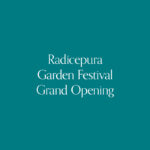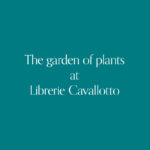“Alla Mensa di Madre Etna” illustrates the ethnobotanical relationships between edible plants and their anthropogenic pollinators. The garden celebrates the richness of edible plants, portraying the great interplay of natural selection and human interference over time, which resulted in today’s ecological diversity.
Etna represents the primordial earth and fire that gave rise to the progenitors of edible species. A volcano with a feminine name, here interpreted as “mother” whose maternal benevolence is expressed in the fertility she bestowed on her soils, thus allowing the proliferation of human life.
The edible garden spreads over ash-grey soil like a tongue of lava from the volcano that descends into the valley, creating a tapestry of life, a plethora of colours and aromas. In fact, the “river” of edible species is oriented towards the direction of Etna, symbolically paying homage to her.
The garden is divided into three zones of edible essences: wild native plants, common native plants and cultivated plants. This succession is a dialogue between past and present, wild and cultivated, pure and hybrid, origin and co-evolution.
Humans feed at nature’s table: at the center of the garden is a circular stone table that can be reached from every corner of the garden, with no obligatory paths. The uneven paths left clear by the vegetation allow people to stroll gently through the garden, brushing past shrubs and trees, allowing intimate contact with the surrounding landscape.
Everyone is invited to Mother Etna’s Table! Have a seat and enjoy the handkerchief of edible plants in your banquet. On the table, taxonomic labels allow you to appreciate the plants themselves more closely as if they were your friend during a convivial meal.
“Alla Mensa di Madre Etna” is a celebration of abundance and resilience, a homage to the Sicilian mainland, a tribute to those who hold traditional botanical and medicinal knowledge of edible plants, as well as to today’s gardeners and farmers.

The Italian-Malaysian team consists of two award-winning landscape architects, Linda Grisoli and Gordon Goh, who collaborate on academia and design practices, and participated in lectures and conference.Their academic research on landscape history and theory, particularly on the ambiguities of nature-human relationships, has materialized in the publication of scientific articles in international journals.
Their design practice values both humans and non-human agencies, and adopts biophilia and topophilia principles in their landscape design, intending to create a landscape that enhances local wildlife as well as strengthens the human sense of place and belonging.
Perceiving the garden as a multi-layered landscape, the designers usually promote the presence of native plants, incorporate cultural associations, and use local materials to highlight the aesthetic qualities that pertain to the spirit of the place, which brought about the successful manifestation of gardens and landscapes.





